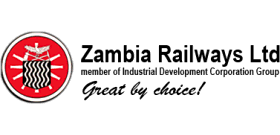 Zambia’s Rail Ambitions: Modernisation Plans Set to Transform Regional Connectivity and Hospitality
Zambia’s Rail Ambitions: Modernisation Plans Set to Transform Regional Connectivity and Hospitality
Zambia is on the cusp of a significant transformation in its railway sector, with sweeping plans to overhaul and expand its rail infrastructure over the next decade. The state-owned Industrial Development Corporation (IDC), which oversees Zambia Railways, has outlined a two-phase strategy that promises to reshape not only the movement of goods but also the broader landscape for tourism, hospitality, and regional trade.
At the heart of this vision is a commitment to first rehabilitate the existing railway line, which currently operates at a sluggish 15-20km/h, before embarking on the construction of a new, modern rail system. According to Cornwell Muleya, CEO of the IDC, the construction of a new railway line is projected to take approximately seven years, but the immediate priority is to restore the current infrastructure to prevent disruptions and ensure the continued flow of goods across the country.
The rehabilitation process is both urgent and ambitious. The IDC estimates that Zambia Railways will require around US\$1.75 billion to bring the existing line up to standard. This investment is not limited to track repairs; it also encompasses the restoration of supporting operations such as rolling stock maintenance, acquisition of new locomotives, and the modernisation of the industrial complex that underpins railway operations. The company is actively seeking partnerships with both local and international entities to secure the necessary funding .
In the current budget, the IDC has allocated K100 million to finance feasibility studies, which will guide the company’s restructuring journey and inform the second phase of its revitalisation plan. This careful, phased approach reflects a recognition that patching up the old system is no longer viable—the infrastructure has deteriorated to a point where only a comprehensive overhaul will suffice .
The first phase of the plan focuses on rehabilitating the line to prevent service interruptions, while the second phase aims to upgrade the system to modern railway standards. The goal is to enable speeds of at least 100km/h for freight and 120km/h for passenger trains, a dramatic improvement that would bring Zambia’s railways in line with international benchmarks and significantly enhance the country’s logistical competitiveness.
Currently, Zambia Railways faces acute operational challenges. The company needs between 20 and 32 locomotives to function effectively, yet only six are currently operational—two owned and the rest leased. The rolling stock deficit is equally stark: Zambia Railways operates 875 wagons but requires about 2,500 to reach optimal performance. These gaps underscore the scale of the recapitalisation effort required and the importance of strategic investment in both hardware and human capital .
Looking ahead, Zambia Railways anticipates commencing the revamp of its rail infrastructure in 2026. The initial focus will be on repairing the line connecting Ndola on the Copperbelt to Kapiri Mposhi, the starting point in Zambia of the Tanzania-Zambia Railway (TAZARA). The second phase will involve restoring the main railway line stretching from Livingstone, on the border with Zimbabwe, to Chililabombwe on the Copperbelt, which borders the Democratic Republic of the Congo .
For Zambia’s tourism and hospitality sectors, these developments are poised to be transformative. Improved rail connectivity will make it easier for visitors to access key destinations such as the Victoria Falls, national parks, and cultural sites along the railway corridor. Faster, more reliable trains will also support the growth of domestic tourism, enabling Zambians to explore their own country with greater ease and comfort. The hospitality industry stands to benefit from increased passenger flows, as hotels, lodges, and restaurants near railway stations experience higher demand.
Comparisons with other African nations offer valuable lessons. In Kenya, the Standard Gauge Railway (SGR) has revolutionised travel between Nairobi and Mombasa, boosting both freight efficiency and passenger numbers. The SGR’s integration with local tourism packages has spurred growth in the hospitality sector, with hotels and tour operators along the route reporting increased business. Similarly, South Africa’s luxury rail services, such as the Blue Train and Rovos Rail, have become iconic tourism products, attracting high-spending visitors and showcasing the potential for railways to drive upmarket travel experiences.
However, the Zambian context presents unique challenges. The country’s rail network has suffered from years of underinvestment, and the current operational speeds are among the lowest in the region. The lack of integration with neighbouring railway systems further limits the potential for cross-border tourism and trade. Addressing these issues will require not only capital investment but also institutional reforms, improved management practices, and a renewed focus on regional cooperation.
The IDC’s phased approach—prioritising rehabilitation before new construction—reflects a pragmatic understanding of these realities. By first stabilising the existing network, Zambia can ensure continuity of service and build a foundation for future expansion. The planned new railway line, once completed, will offer a modern, high-speed alternative that can support both freight and passenger growth for decades to come.
For the African travel industry, Zambia’s rail ambitions signal a broader trend towards infrastructure-led development. As countries across the continent invest in modernising their transport networks, opportunities are emerging for new tourism products, improved logistics, and enhanced regional integration. The success of Zambia’s railway overhaul will depend on sustained political will, effective public-private partnerships, and a clear vision for how rail can support not just economic growth, but also the enrichment of the country’s cultural and natural heritage.
As the journey begins, Zambia’s railways are set to become more than just a means of moving goods—they are poised to become vital arteries for tourism, hospitality, and regional prosperity, offering new horizons for the nation and its neighbours alike.
